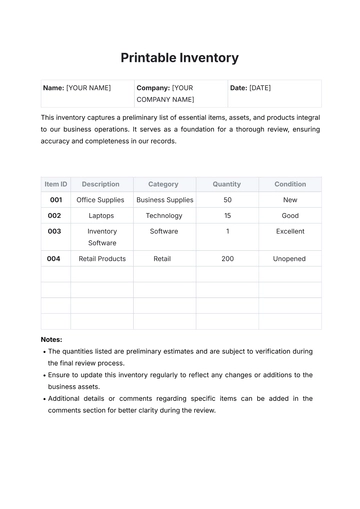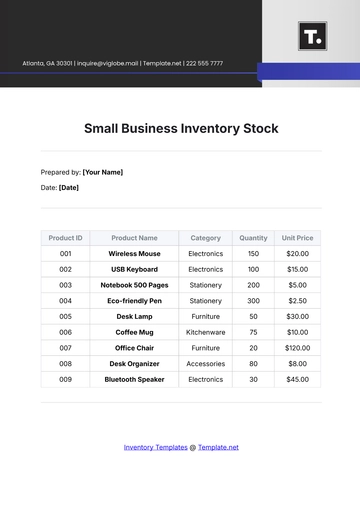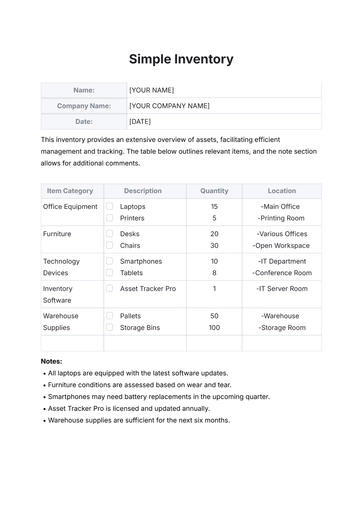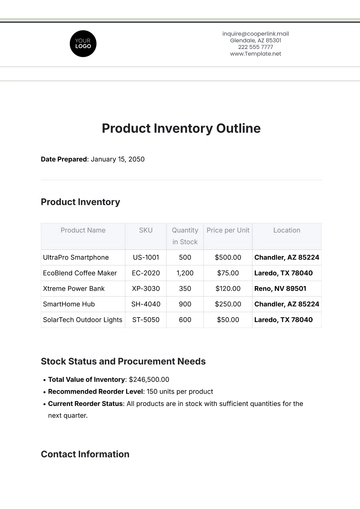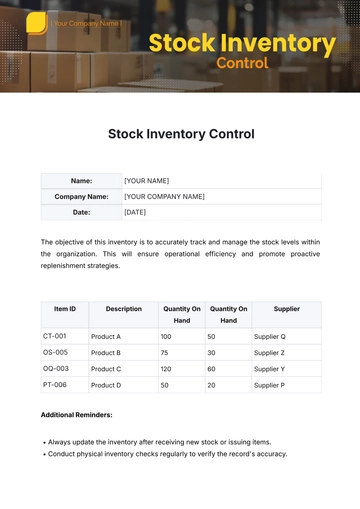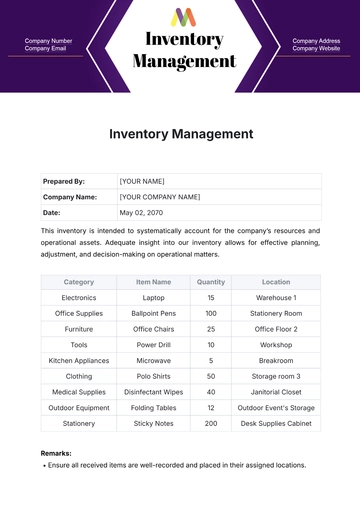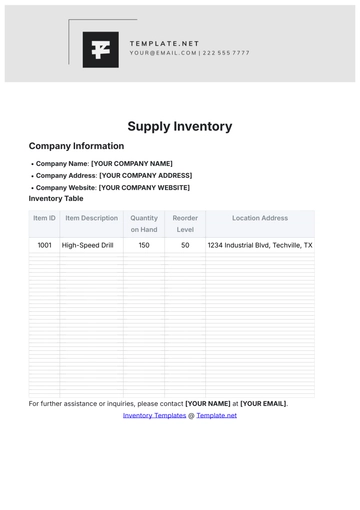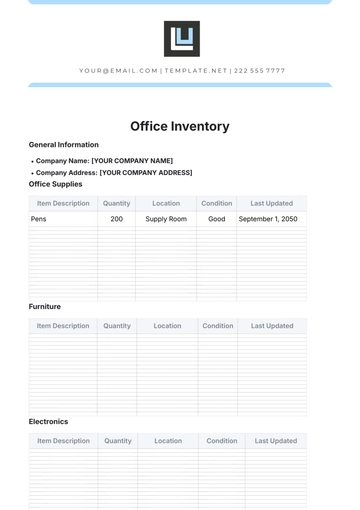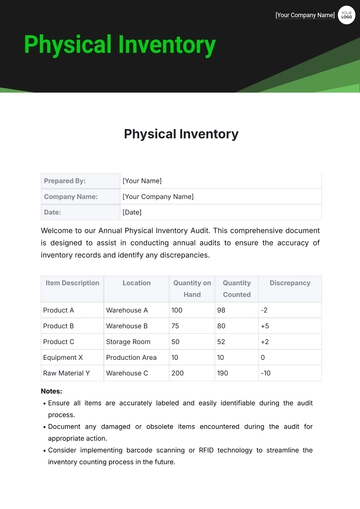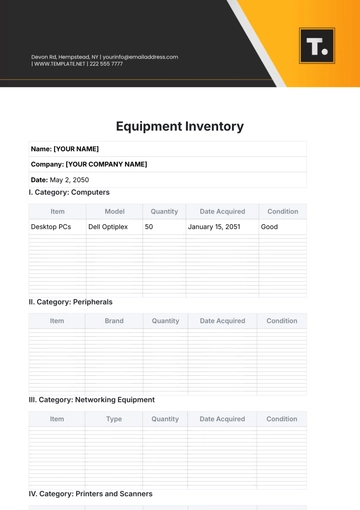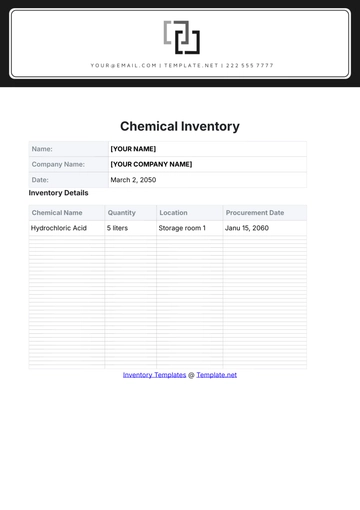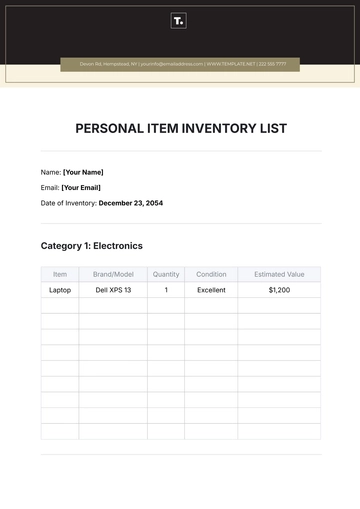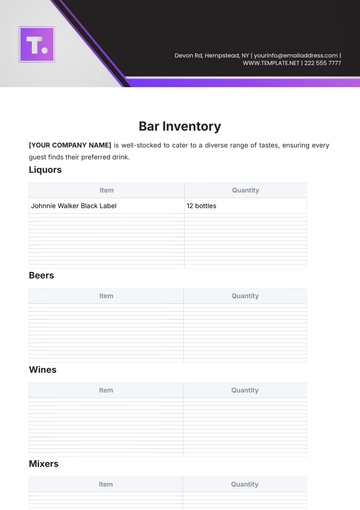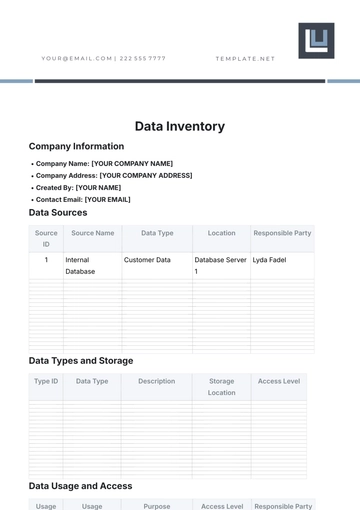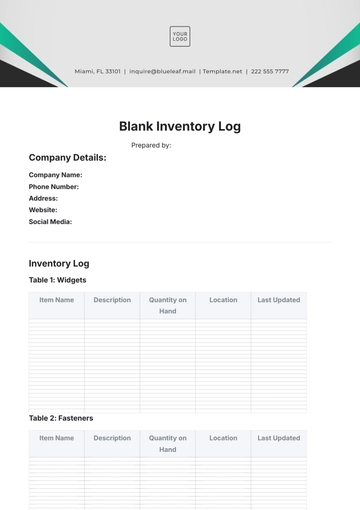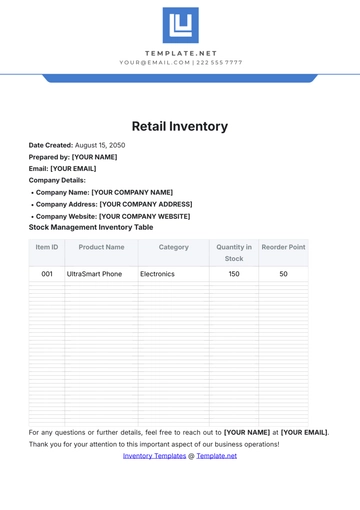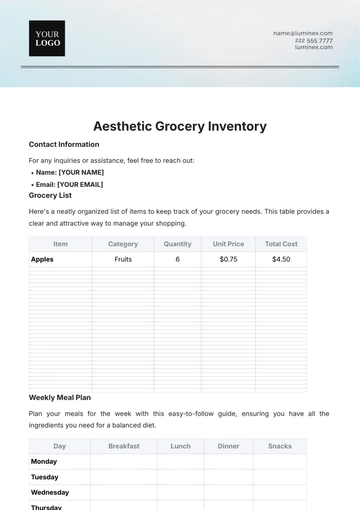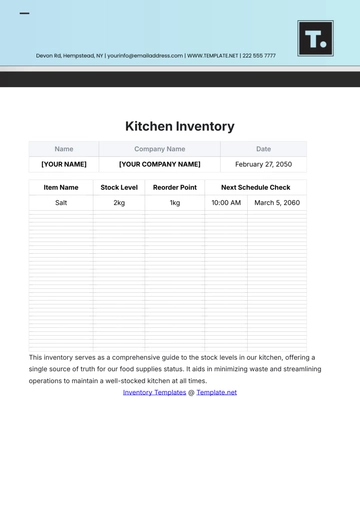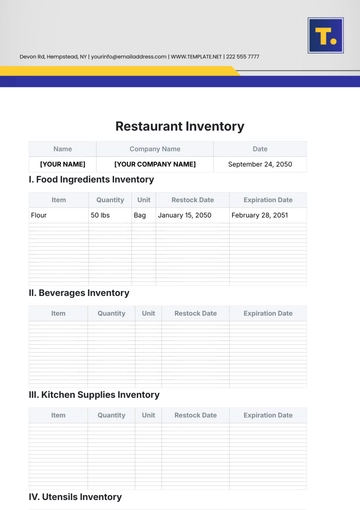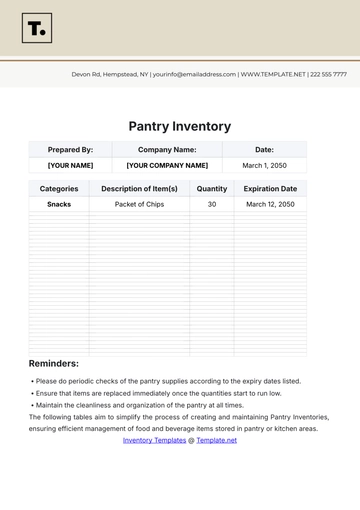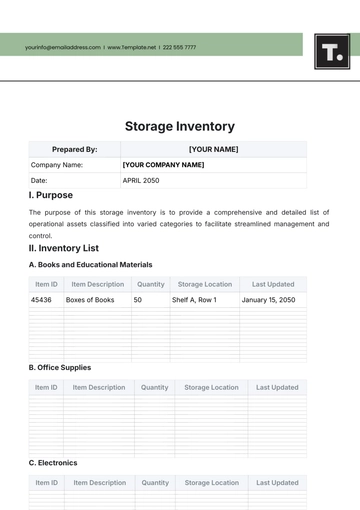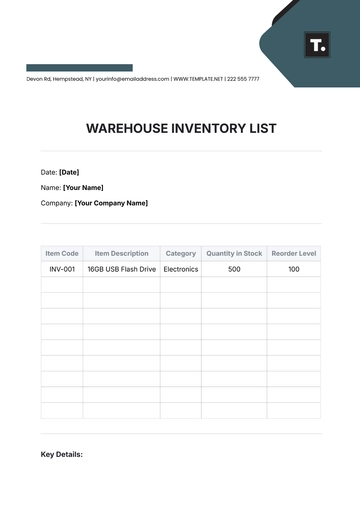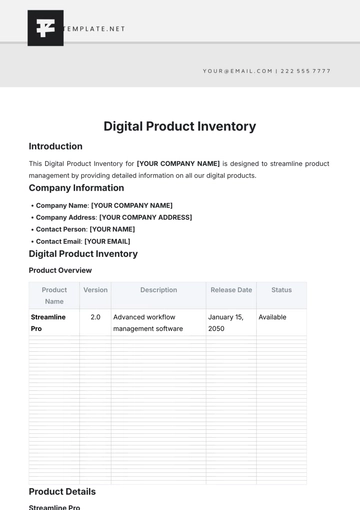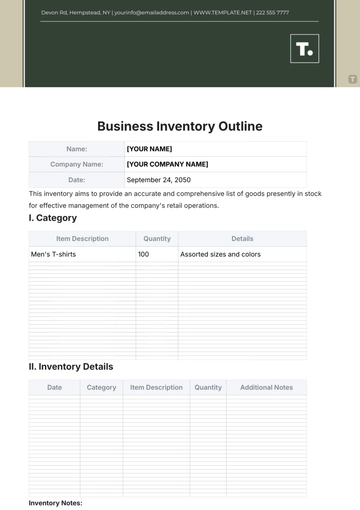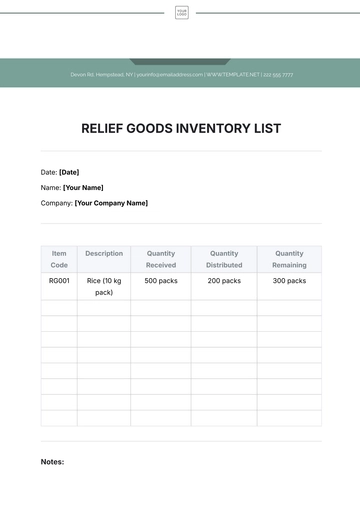Internal Control Inventory
Prepared By: | Company Name: | Date: |
|---|
[YOUR NAME] | [YOUR COMPANY NAME] | [DATE] |
The purpose of this inventory is to document and manage internal controls that are relevant to inventory management within our organization.
Inventory Control Procedures | Description | Responsible Party | Frequency |
|---|
Inventory Counting | Regular physical counts of inventory items to reconcile with records and detect discrepancies. | Inventory Manager | Monthly |
Receiving Procedures | Verification of received goods against purchase orders, inspection for damage, and proper documentation. | Warehouse Staff | Upon Receipt |
Storage Practices | Proper storage conditions to prevent damage, spoilage, or theft, including secure shelving and climate control if necessary. | Inventory Supervisor | Ongoing |
Access Control | Restriction of access to inventory storage areas to authorized personnel only, through key cards, locks, or security measures. | Security Team | Ongoing |
Inventory Documentation | Accurate and timely recording of inventory transactions, including receipts, issues, transfers, and adjustments. | Accounting Department | Daily |
Inventory Reconciliation | Regular reconciliation of physical inventory counts with recorded inventory levels to identify and resolve discrepancies. | Internal Auditor | Quarterly |
Inventory Reporting | Generation of reports on inventory levels, turnover rates, and valuation for management review and decision-making. | Finance Department | Monthly |
Vendor Management | Evaluation of vendor performance, including delivery timelines, product quality, and adherence to contracts. | Procurement Team | Annually |
Obsolete Inventory Management | Identification and disposal of obsolete or excess inventory to prevent carrying costs and optimize space utilization. | Inventory Manager | As Needed |
Additional Reminders / Notes
Documentation: Ensure accurate and complete documentation for all inventory transactions.
Training: Train staff on inventory management procedures regularly.
Security: Review and update security measures to prevent theft or unauthorized access.
Technology: Consider using inventory management software for efficiency.
Audits: Conduct regular internal audits to improve control procedures.
Emergency Preparedness: Develop protocols for inventory management during emergencies.
Vendor Communication: Maintain open communication with vendors for timely deliveries.
Disposal Procedures: Establish proper procedures for disposing of inventory items.
Management Oversight: Regularly review inventory performance metrics for informed decision-making.
Inventory Templates @ Template.net

